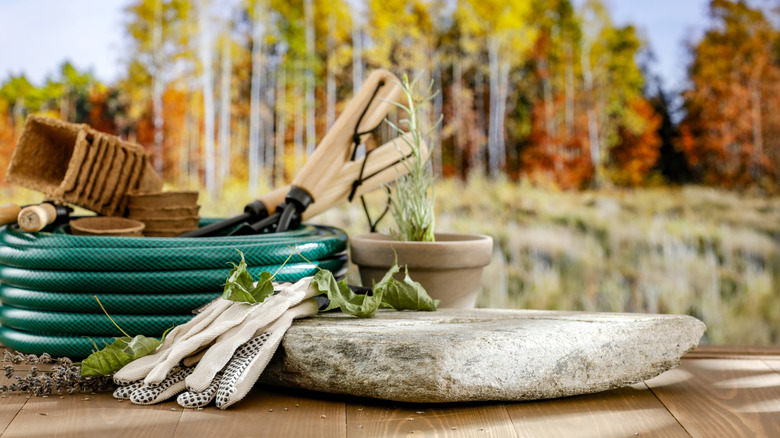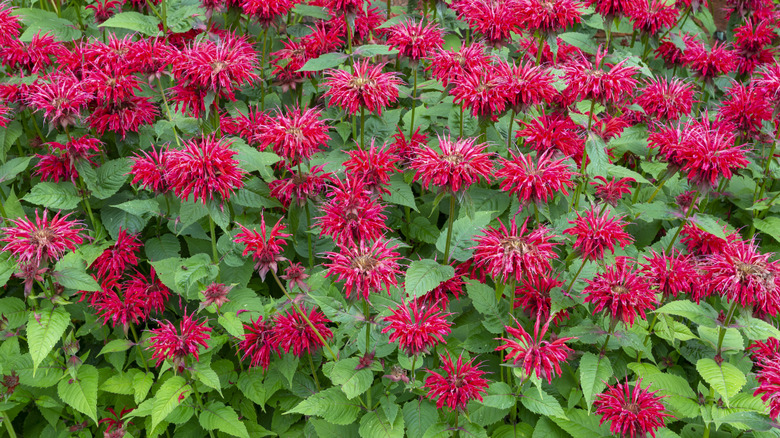One Of The Best Garden Perennials You Should Be Planting In September
If you want a hardy perennial that will attract all kinds of pollinators to your yard come spring, then plant bee balm this September. Bee balm (Monarda spp.) offers up the red, pink, or purple tubular flowers that bees and butterflies love. It's also absolutely among nectar-rich flowers that will easily attract hummingbirds to your garden.
You many know bee balm as wild bergamot, the centuries-old wildflower that has been used by Native Americans to help treat all kinds of ailments. It should be no surprise, given its name, that it's a key ingredient in a homemade remedy to ease the pain of bee stings. Hummingbirds love it because they can use their long tongues to slurp up nectar from the narrow, slender flowers. Some bees don't care that they aren't physically suited to get at the nectar, though. They'll just gnaw through the petals of the flowers to get at the good stuff.
Bee balm is a versatile plant that will thrive in USDA Plant Hardiness Zones 3 through 9. It's a good idea to plant it and many other perennials in September, because it gives them a chance to establish strong roots before the first frost sets in. Planting in the fall might also be safer than the spring, since the temperature doesn't fluctuate quite as much in lower number zones. As anyone who lives in the Midwest knows, there usually more of a threat of plant-killing frost in April than in September.
Why you should plant bee balm in the fall
September is a great time to plant bee balm because in zone 4 and zone 5, at least, first frosts tend to land in October. That means your bee balm seeds will have a little bit of time to germinate before winter so they'll be ready to really bloom come spring, and maybe longer for warmer zones. Planting in the fall helps get your garden spring-loaded, literally, so that flowers emerge on their own with the onset of warmer weather. If you're worried about early frosts in the fall, you can always learn how to winterize bee balm – one strategy is to use mulch to keep the plant's roots protected.
If you're ready to plant bee balm, then know that the flowers prefer either neutral or slightly acidic soil and a full six hours of sun a day. Spacing is super important when planting, since powdery mildew might make an appearance if they get too crowded ... and no one wants that. While not a surefire cure, you can pick a variety of bee balm that might be more fungal resistant, such as Monarda didyma and Monarda fistulosa hybrids.
Also, think about making sure bee balm has natural borders, or even put it in a container. It's in the mint family, and, as many seasoned gardeners know, mint can grow aggressively. You don't have to do much to propagate bee balm. This fast-growing plant often does this on its own.

